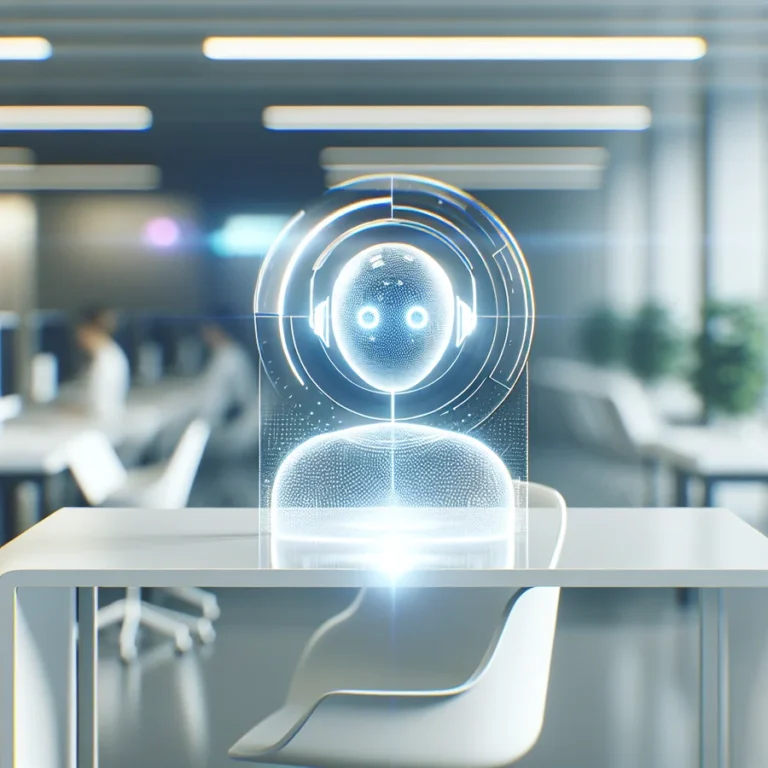AI-Powered Cybersecurity: Protecting Data in 2025
The digital world is constantly evolving, and so are the threats against it. In 2025, protecting our data will rely heavily on AI-powered cybersecurity. This guide explores how artificial intelligence is revolutionizing the way we defend against cyberattacks, offering a glimpse into the future of data protection.
We’ll discuss the rising sophistication of AI-driven threats and how AI-powered cybersecurity solutions are stepping up to meet the challenge. From threat detection to incident response, discover how AI is becoming an indispensable tool in the fight against cybercrime. Get ready to understand the critical role of AI in safeguarding our digital lives in the years to come.
The Growing Need for AI in Cybersecurity
Cyberattacks are becoming more frequent and sophisticated. Traditional security measures are struggling to keep up. This is where AI-powered cybersecurity comes in. AI offers the speed and intelligence needed to identify and neutralize threats in real-time.
Think of it like this: imagine a security guard trying to monitor thousands of security cameras at once. It’s impossible for a human to catch everything. AI, on the other hand, can analyze vast amounts of data instantly, spotting suspicious activity that a human might miss.
How AI is Transforming Cybersecurity
AI is changing cybersecurity in several key ways. It’s not just about replacing human analysts; it’s about augmenting their abilities and making them more effective.
- Enhanced Threat Detection: AI algorithms can analyze network traffic, system logs, and other data sources to identify patterns that indicate malicious activity.
- Automated Incident Response: AI can automate responses to security incidents, such as isolating infected systems or blocking malicious traffic.
- Predictive Security: AI can predict future attacks by analyzing historical data and identifying vulnerabilities before they are exploited.
- Vulnerability Management: AI can continuously monitor systems for weaknesses and prioritize patching efforts based on real-world threat intelligence.
Let’s break down each of these areas in more detail.
Enhanced Threat Detection with AI
Traditional threat detection methods rely on signatures and rules. These methods are effective against known threats, but they struggle to detect new or unknown attacks. AI, especially machine learning, can learn from data and identify anomalies that indicate a potential threat, even if it’s never been seen before.
Imagine you’re trying to spot fake news. Traditional methods might look for specific keywords or phrases. AI, on the other hand, can analyze the writing style, the source of the information, and other factors to determine if the news is likely to be fake.
Automated Incident Response Using AI
When a security incident occurs, time is of the essence. The faster you can respond, the less damage the attacker can do. AI can automate many of the tasks involved in incident response, such as isolating infected systems, blocking malicious traffic, and notifying security personnel.
Think of it like a fire alarm system. When a fire is detected, the system automatically alerts the fire department and activates sprinklers. AI can do the same thing for cybersecurity incidents, automatically taking steps to contain the threat and prevent further damage.
Predictive Security with AI
Predictive security is about anticipating future attacks before they happen. AI can analyze historical data, identify vulnerabilities, and predict which systems are most likely to be targeted. This allows security teams to proactively harden their defenses and prevent attacks before they occur.
It’s like predicting the weather. By analyzing historical weather patterns, meteorologists can predict when and where storms are likely to occur. Similarly, AI can predict cyberattacks by analyzing historical attack data and identifying patterns.
Vulnerability Management Enhanced by AI
Keeping software up to date is crucial for security. However, it can be difficult to keep track of all the vulnerabilities in your systems and prioritize patching efforts. AI can help by continuously monitoring systems for weaknesses and prioritizing patching based on real-world threat intelligence.
Imagine you’re a doctor trying to diagnose a patient. You need to know all the patient’s symptoms and medical history to make an accurate diagnosis. AI can do the same thing for vulnerability management, analyzing system data and threat intelligence to identify and prioritize vulnerabilities.
Key AI Technologies Used in Cybersecurity
Several AI technologies are used in cybersecurity. Each technology has its strengths and weaknesses, and they are often used in combination to provide a comprehensive security solution.
- Machine Learning (ML): ML algorithms learn from data to identify patterns and make predictions.
- Natural Language Processing (NLP): NLP allows computers to understand and process human language.
- Deep Learning (DL): DL is a type of machine learning that uses artificial neural networks with multiple layers to analyze data.
- Robotic Process Automation (RPA): RPA automates repetitive tasks, freeing up human analysts to focus on more complex issues.
Let’s take a closer look at each of these technologies.
Machine Learning (ML) in Cybersecurity
Machine learning is the most widely used AI technology in cybersecurity. ML algorithms can be trained to identify malware, detect intrusions, and predict phishing attacks. They can also be used to analyze user behavior and identify insider threats.
Think of it like training a dog. You show the dog a trick, reward it when it does it correctly, and correct it when it does it wrong. Over time, the dog learns to perform the trick consistently. ML algorithms learn in a similar way, by analyzing data and adjusting their parameters to improve their accuracy.
Natural Language Processing (NLP) in Cybersecurity
Natural language processing allows computers to understand and process human language. In cybersecurity, NLP can be used to analyze emails, social media posts, and other text-based data to identify threats. It can also be used to automate security tasks, such as generating reports and responding to user inquiries.
Imagine you’re trying to understand a foreign language. You need to learn the grammar, vocabulary, and cultural context to understand what people are saying. NLP algorithms do the same thing, analyzing text and code to understand its meaning and intent.
Deep Learning (DL) in Cybersecurity
Deep learning is a type of machine learning that uses artificial neural networks with multiple layers to analyze data. DL algorithms are particularly good at identifying complex patterns and can be used to detect sophisticated malware and advanced persistent threats (APTs).
Think of it like the human brain. The brain has billions of neurons that are connected in complex ways. DL algorithms mimic this structure, using multiple layers of artificial neurons to analyze data and extract meaningful features.
Robotic Process Automation (RPA) in Cybersecurity
Robotic process automation automates repetitive tasks, freeing up human analysts to focus on more complex issues. In cybersecurity, RPA can be used to automate tasks such as vulnerability scanning, incident reporting, and user provisioning.
Imagine you have a robot that can automatically fill out forms and send emails. RPA is like that, automating repetitive tasks so that humans can focus on more important work.
Challenges and Opportunities in AI-Powered Cybersecurity
While AI-powered cybersecurity offers many benefits, it also presents some challenges. It’s important to be aware of these challenges and take steps to mitigate them.
- Data Bias: AI algorithms are only as good as the data they are trained on. If the data is biased, the algorithm will also be biased.
- Explainability: It can be difficult to understand how AI algorithms make decisions. This can make it difficult to trust them and to debug them when they make mistakes.
- Adversarial Attacks: Attackers can use AI to create attacks that are specifically designed to evade AI-powered defenses.
- Skills Gap: There is a shortage of skilled cybersecurity professionals who can develop and deploy AI-powered security solutions.
Let’s discuss each of these challenges in more detail, along with the opportunities they present.
Data Bias in AI Cybersecurity Systems
AI algorithms learn from data. If the data is biased, the algorithm will also be biased. This can lead to inaccurate or unfair results. For example, if an AI algorithm is trained to detect fraud using data that is primarily from one demographic group, it may be less accurate at detecting fraud in other demographic groups.
To mitigate data bias, it’s important to use diverse and representative datasets to train AI algorithms. It’s also important to regularly monitor AI algorithms for bias and retrain them as needed.
Explainability of AI in Cybersecurity
It can be difficult to understand how AI algorithms make decisions. This is especially true for deep learning algorithms, which can be very complex. This lack of explainability can make it difficult to trust AI algorithms and to debug them when they make mistakes.
To improve the explainability of AI algorithms, researchers are developing new techniques for visualizing and interpreting their decisions. It’s also important to document the design and training of AI algorithms so that others can understand how they work.
Adversarial Attacks Against AI Cybersecurity
Attackers can use AI to create attacks that are specifically designed to evade AI-powered defenses. These are known as adversarial attacks. For example, an attacker might create a slightly modified version of a malware sample that is able to bypass an AI-powered malware detector.
To defend against adversarial attacks, it’s important to use robust AI algorithms that are resistant to manipulation. It’s also important to continuously monitor AI algorithms for signs of attack and retrain them as needed.
Addressing the Cybersecurity Skills Gap
There is a shortage of skilled cybersecurity professionals who can develop and deploy AI-powered cybersecurity solutions. This skills gap is a major obstacle to the widespread adoption of AI in cybersecurity.
To address the skills gap, it’s important to invest in education and training programs that teach cybersecurity professionals how to use AI. It’s also important to create opportunities for cybersecurity professionals to gain experience working with AI technologies.
The Future of AI in Cybersecurity: Trends to Watch
The field of AI-powered cybersecurity is constantly evolving. Here are some of the key trends to watch in the coming years:
- Increased Automation: AI will automate more and more security tasks, freeing up human analysts to focus on more strategic issues.
- AI-Driven Threat Hunting: AI will be used to proactively hunt for threats that have evaded traditional security measures.
- AI-Powered Security Orchestration, Automation, and Response (SOAR): AI will be used to automate and orchestrate security workflows, improving the efficiency and effectiveness of security operations.
- AI for Cloud Security: AI will be used to protect cloud environments, which are becoming increasingly complex and difficult to secure.
Let’s explore each of these trends in more detail.
Increased Automation with AI in Cybersecurity
AI will automate more and more security tasks, freeing up human analysts to focus on more strategic issues. This will help to reduce the workload on security teams and improve their overall efficiency.
Think of it like self-driving cars. As self-driving technology improves, humans will be able to spend less time driving and more time on other activities. Similarly, as AI automates more security tasks, humans will be able to spend less time on routine tasks and more time on strategic initiatives.
AI-Driven Threat Hunting
AI will be used to proactively hunt for threats that have evaded traditional security measures. This will help to identify and neutralize threats before they can cause significant damage.
Imagine you’re a detective trying to solve a crime. You need to gather evidence, analyze clues, and track down suspects. AI can help you do this more effectively by analyzing large amounts of data and identifying patterns that might otherwise be missed.
AI-Powered Security Orchestration, Automation, and Response (SOAR)
AI will be used to automate and orchestrate security workflows, improving the efficiency and effectiveness of security operations. This will help to reduce the time it takes to respond to security incidents and minimize the impact of attacks.
Think of it like a factory assembly line. Each step in the process is automated and coordinated to ensure that products are manufactured efficiently and effectively. AI can do the same thing for security operations, automating and orchestrating security workflows to improve their efficiency and effectiveness.
AI for Cloud Security
AI will be used to protect cloud environments, which are becoming increasingly complex and difficult to secure. This will help to ensure that data and applications in the cloud are protected from unauthorized access and cyberattacks.
Imagine you’re trying to protect a castle. You need to build walls, dig moats, and station guards to defend against attackers. AI can help you do this more effectively by monitoring the castle walls, detecting intruders, and alerting the guards.
Preparing for AI-Powered Cybersecurity in 2025
To prepare for the future of AI-powered cybersecurity, organizations need to take several steps:
- Invest in AI Skills: Train your cybersecurity professionals on AI technologies.
- Embrace Automation: Automate routine security tasks to free up human analysts.
- Adopt a Zero-Trust Architecture: Implement a zero-trust security model, which assumes that no user or device is trusted by default.
- Continuously Monitor and Adapt: Continuously monitor your security posture and adapt your defenses to the evolving threat landscape.
Let’s discuss each of these steps in more detail.
Investing in AI Skills for Cybersecurity
The most important step is to invest in AI skills. This means training your cybersecurity professionals on AI technologies and creating opportunities for them to gain experience working with AI. Capitol Technology University offers accredited degree programs that provide an exceptional foundation for professionals aspiring to excel in today’s rapidly evolving digital landscape. These programs equip students with the advanced technical skills and critical thinking necessary to tackle complex challenges in cybersecurity and cyber analytics, artificial intelligence, machine learning, data science, and quantum computing.
This can be done through formal training programs, on-the-job training, and mentorship programs. It’s also important to encourage cybersecurity professionals to experiment with AI technologies and to share their knowledge with others.
Embracing Automation in Cybersecurity
Another important step is to embrace automation. This means automating routine security tasks, such as vulnerability scanning, incident reporting, and user provisioning. Automating these tasks will free up human analysts to focus on more strategic issues and improve the overall efficiency of security operations.
This can be done using RPA tools, scripting languages, and other automation technologies. It’s also important to integrate automation into your security workflows so that it becomes a seamless part of your security operations.
Adopting a Zero-Trust Architecture
A zero-trust architecture assumes that no user or device is trusted by default. This means that every user and device must be authenticated and authorized before they are allowed to access resources. Zero trust is one of the top cyber security trends in 2025, with more and more organizations adopting micro-segmentation, user context checks, and continuous session monitoring.
This can be implemented using a variety of technologies, such as multi-factor authentication, microsegmentation, and identity and access management (IAM) systems. It’s also important to continuously monitor and audit your zero-trust architecture to ensure that it is working effectively.
Continuously Monitoring and Adapting Cybersecurity Defenses
The threat landscape is constantly evolving. New attacks are being developed all the time, and attackers are constantly finding new ways to evade security measures. It’s important to continuously monitor your security posture and adapt your defenses to the evolving threat landscape.
This can be done using security information and event management (SIEM) systems, threat intelligence feeds, and other monitoring tools. It’s also important to regularly conduct penetration tests and vulnerability assessments to identify weaknesses in your defenses.
Conclusion
AI-powered cybersecurity is the future of data protection. By leveraging the power of artificial intelligence, organizations can better defend against sophisticated cyberattacks and protect their valuable data. As we move closer to 2025, embracing these AI-driven solutions will be crucial for staying ahead of the evolving threat landscape. Investing in AI skills, embracing automation, adopting a zero-trust architecture, and continuously monitoring and adapting your defenses are essential steps to prepare for the future of cybersecurity.
FAQs About AI-Powered Cybersecurity
What is AI-powered cybersecurity?
AI-powered cybersecurity refers to the use of artificial intelligence technologies, such as machine learning and natural language processing, to enhance cybersecurity defenses. AI can automate threat detection, incident response, and vulnerability management, making security operations more efficient and effective. Consider exploring DeepSeek AI’s safety developments for a broader perspective.
How does AI improve threat detection?
AI algorithms can analyze vast amounts of data to identify patterns and anomalies that indicate malicious activity. Machine learning models can learn from historical data to detect new and unknown threats, improving threat detection accuracy and speed.
What are the main challenges of using AI in cybersecurity?
Some challenges include data bias, lack of explainability, adversarial attacks, and the cybersecurity skills gap. Addressing these challenges requires diverse datasets, transparent AI models, robust algorithms, and investment in AI skills training. You can read more about how DeepSeek handles data privacy to understand the nuances of data management in AI.
How can organizations prepare for AI-powered cybersecurity in 2025?
Organizations should invest in AI skills training for cybersecurity professionals, automate routine security tasks, adopt a zero-trust architecture, and continuously monitor and adapt their defenses to the evolving threat landscape. Another aspect to consider is DeepSeek’s cost-effectiveness, which can help organizations balance security investments.
What are some trends to watch in the future of AI-powered cybersecurity?
Key trends include increased automation of security tasks, AI-driven threat hunting, AI-powered security orchestration, automation, and response (SOAR), and the use of AI for cloud security. More insights on AI cybersecurity and data protection will help stay informed on these developing trends.






